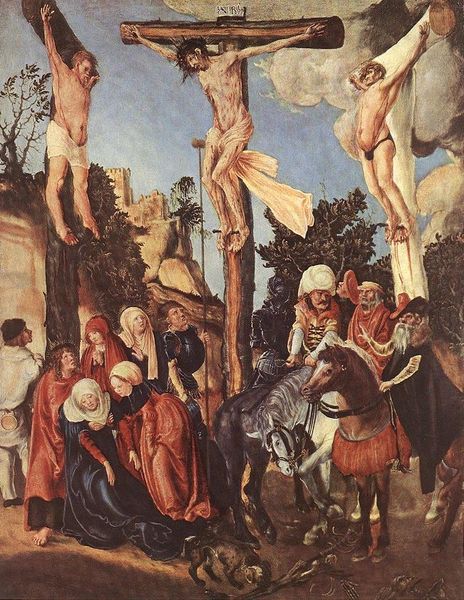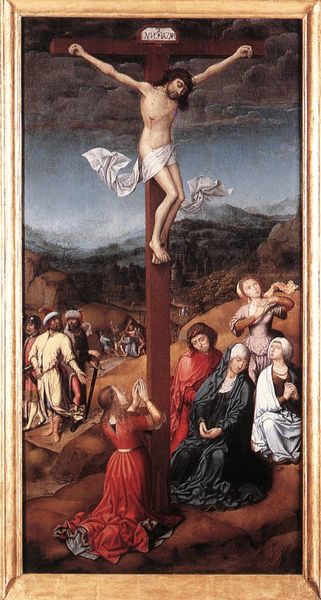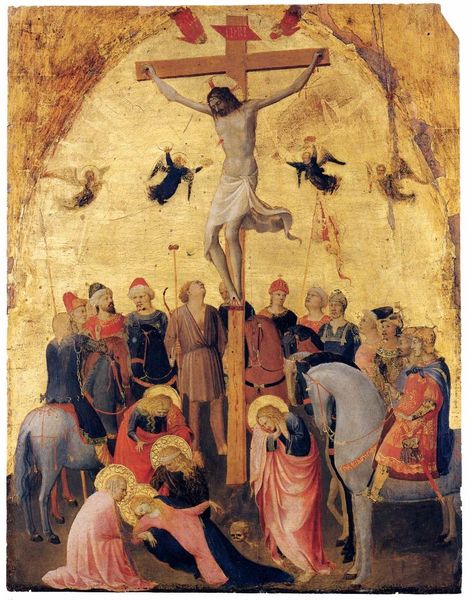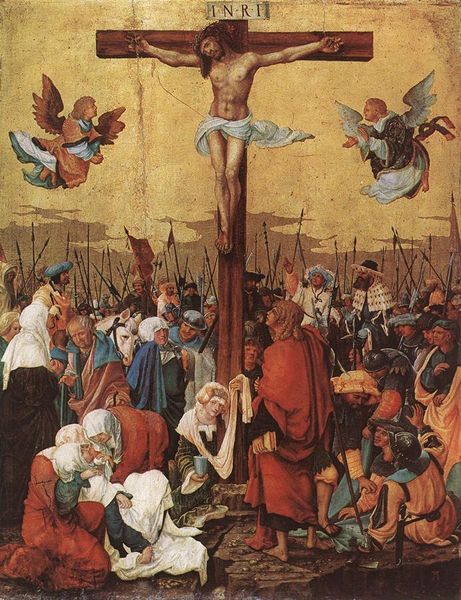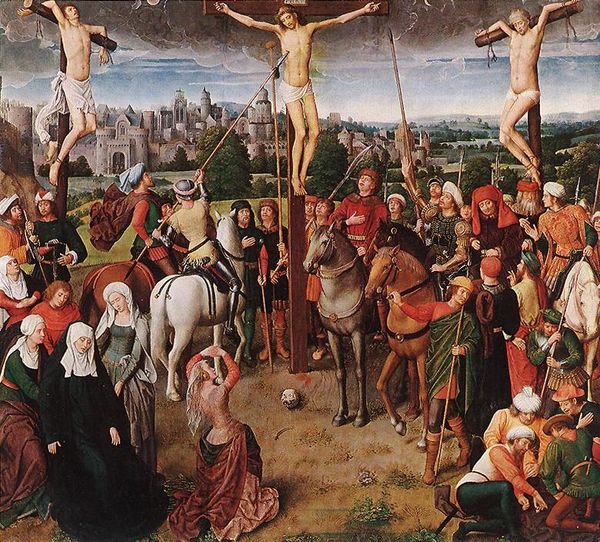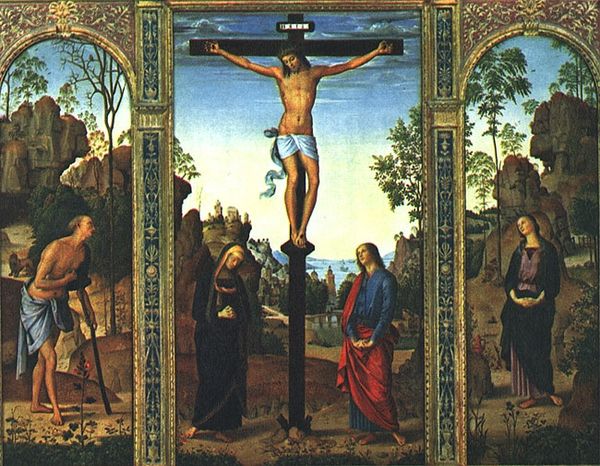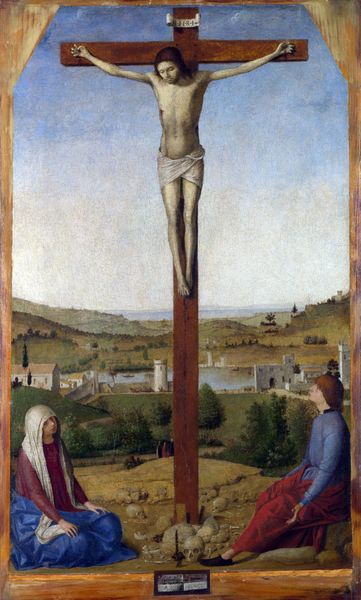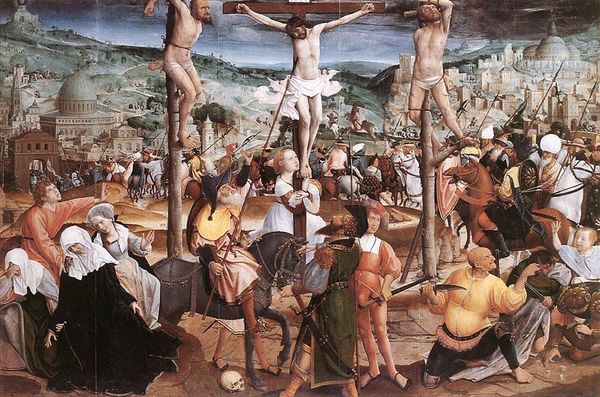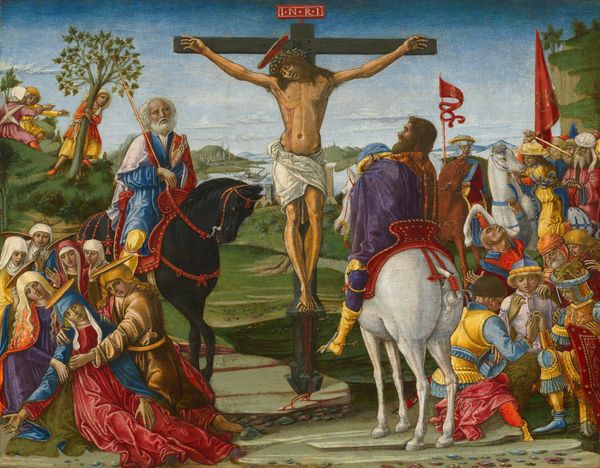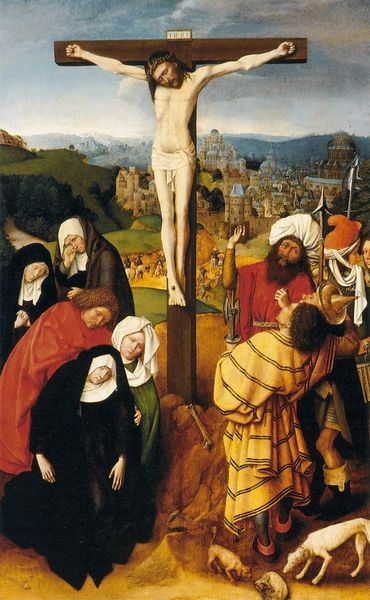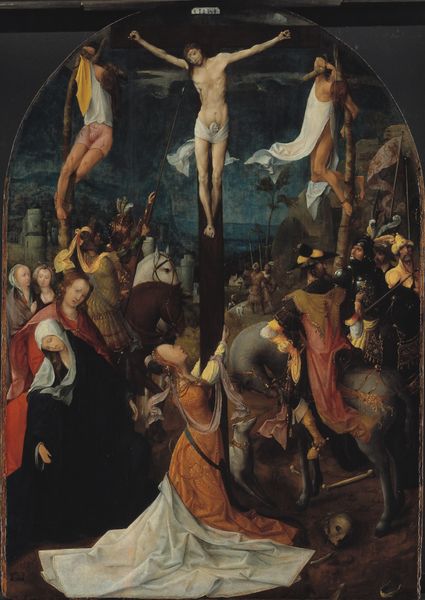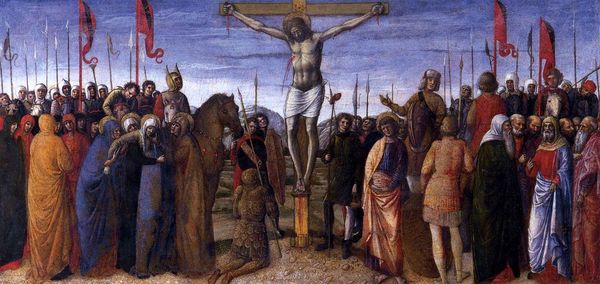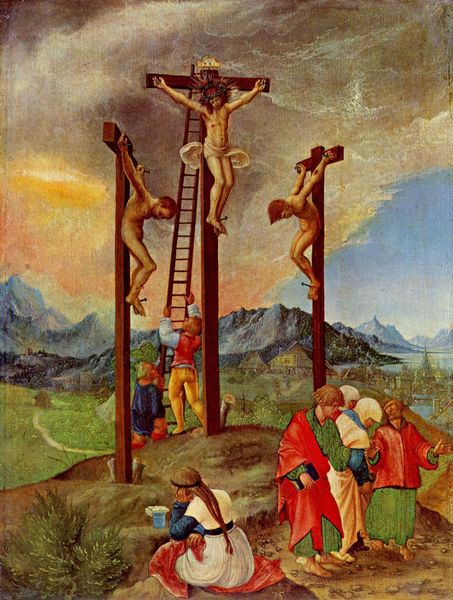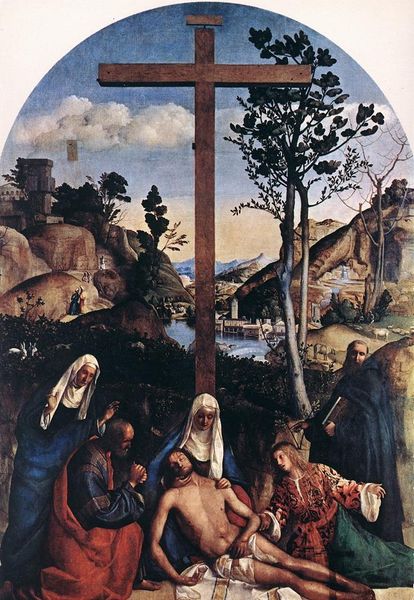
painting, oil-paint, fresco
#
portrait
#
narrative-art
#
painting
#
oil-paint
#
landscape
#
figuration
#
fresco
#
oil painting
#
jesus-christ
#
christianity
#
crucifixion
#
history-painting
#
italian-renaissance
Copyright: Public domain
Jan Provoost created this "Crucifixion" painting around the late 15th or early 16th century. Notice how the composition is structured around a central cross, flanked by two additional crosses, creating a symmetrical yet unsettling balance. The artist employs a muted color palette, dominated by earthy tones, which adds to the somber mood. The painting uses scale and perspective to emphasize the religious narrative. The city of Jerusalem in the background shrinks into insignificance, while the foreground is filled with a diverse crowd of onlookers. This invites contemplation on the relationship between the divine and the human. The formal elements of the painting act as signifiers within the broader cultural and religious context. The use of symmetry is disrupted, suggesting a world thrown into disarray by the event. The muted colors enhance the overall feeling of grief. Consider how each formal element contributes to the layers of meaning embedded in this visual representation.
Comments
No comments
Be the first to comment and join the conversation on the ultimate creative platform.
